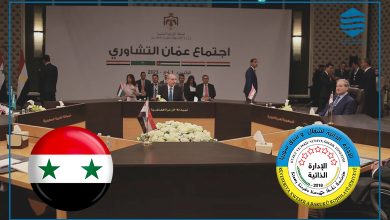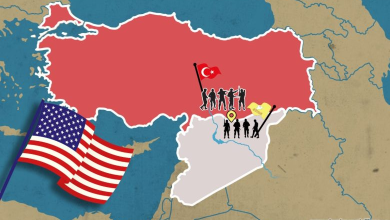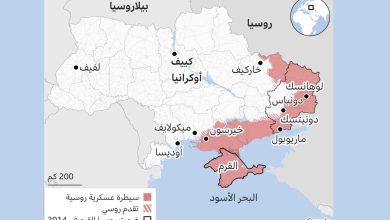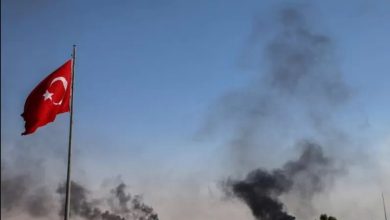
Erdogan Defies the Economic Logic! Painful Blows to the Turkish Lira
Also Available in (arabic)
The Turkish Lira witnessed a stability somehow during the first decade of the rule of Justice and Development Party (AKP), due to the focus of the country’s economic situation, while adopting the policy of zero problems, which the latter party has worked on to deal with its political, regional, and strategic vicinity. Moreover, the state of semi-understanding with the Kurdistan Workers Party (PKK), and the broker of the cease fire agreement between both parties there. Alongside, Erdogan’s promises to the Kurds to solve their cause and develop their regions, which has reflected stability on the internal level, and has left obvious implications on the improvement of the economic reality and its indicators.
However, this policy soon changed, and disagreements erupted between the party’s figures, especially between President Recep Tayyip Erdogan and his Foreign Minister Ahmet Davutoglu.
At the local level, the denial policy of the Kurds started again, many Kurdish representatives in parliament were imprisoned, and then there was a failed coup attempt in 2016.
On the foreign level, the Turkish government began interfering in many hot and cold files in the region, in an effort by the Turkish president to revive what was called the Neo-Ottomanism, or to help the Islamic Brotherhood Movement in taking control and dominating the region.
Today, as the Turkish lira is witnessing an unprecedented collapse, and it has crossed the barrier of 11 lira for one dollar, it is necessary to analyze the existing economic reality in Turkey, and evaluate the policies that the Turkish president insists on it. Erdogan’s blatant interventions in the central bank’s approach, and the monetary policies that must be followed to confront this sharp slide of the lira, its implications on the Turkish economy, and prospects resulting from such policy.
Would Erdogan’s economic belief that he insists on could bring positive results later on the economy and the livelihood of Turks? On the other hand, would his insistence on emphasizing his view that contradicts economic logic could bring calamities to him and the Turkish economy together?
Plunge and then the rapid slide of the lira
The exchange rate of the Turkish lira did not decline by more than 0.6 lira per the dollar during the first decade of the ruling (AKP) period, during which Turkey was able to achieve high rates of development, compared to the inflation rates in the country. Due to the financial sector that rebounded during that period, and the ability of the Turkish economy On self-financing, and the very low cost of investment and loaning, with the aim of increasing the quantities of cash in the hands of individuals. Erdogan has pursued this policy to achieve high popularity among the Turkish people. However, what happened later is that the increased dependence on hot money flows into the Turkish economy, aiming at taking advantage of the strong growth rates and high investment revenue, without calculating its negative effects in the long term. The negative effects that began to unfold during the subsequent years of that period led to an increase in the external deficit, and allowed the entry of illegal funds, with the complicity of many Turkish officials. It began its threads to unfold in the investigations of December on 7, and 25, 2013, following information about cases of corruption, money laundering, and bribery, in which a number of businesspersons close to the Turkish government, sons of ministers, and senior Turkish officials were involved. They have suspicious relations with the businessperson “Reza Zarrab”, because of which the lira began a series of losses. It lost directly 9% of its value, bringing the total losses at that time – and since the beginning of 2013 – to about 17% per the US dollar, as the exchange rate reached at about 2.21 lira per one dollar, after it was not more than 1.9 lira at the beginning of this year.
This sharp slide in the value of the lira began in August 2018, when the exchange rate reached more than 6.9 liras per dollar on 13 of the same month, due to the ongoing tensions with the United States of America. The latter imposed many economic sanctions on Turkey, which led both “Moody’s and Standard & Poor’s” credit rating agencies to downgrade Turkey’s credit rating on 18, August. It sent a signal of danger to foreign investors, who began fleeing from Turkey, and extracting large amounts of foreign currency. It was considered heated money within the Turkish economy, which constituted a real start of the rise in the exchange rate led to the formation of inflationary pressures that affected both the consumer price indicator and the producer price indicator.
Since the beginning of this year, and due to the Turkish president’s insistence on adopting the policy of reducing interest rates, to stimulate growth and reduce inflation rates, as he claims. Erdogan’s removal of four central bank governors during the past two years, and his blatant interventions in monetary policy after the constitutional amendments he made in 2017. This allowed the president to intervene, the exchange rate rose to record levels that most pessimists did not expect for the performance of the Turkish lira, which today exceeded 12.17 lira per one dollar.
There are many reasons behind the devaluation of the lira
The Turkish lira has lost more than 58.83% of its value since first of August 2018, which pushed inflation rates to rise, and today it reaches at about 20% on an annual basis. There are many reasons behind this continuous rise in the exchange rate of the Turkish lira, especially during 2020-2021, when the Turkish economy went through difficult conditions, following various events and decisions that took place in Turkey, including:
Political reasons: caused by the state of internal instability that has resumed again, which resulted from the coup of the Erdogan government on dealing with the Kurdish issue inside Turkey, and the detention of their representatives in prisons, and the return of security and military tensions with PKK forces. Subsequently, the return of political instability in Turkey again, as an expulsion case for foreign capital and foreign investors.
On the foreign level, these reasons were clearly manifested in the blatant interventions of the Turkish government and its involvement in many heated files and crises in the region, and its military invasions to interfere in the affairs of many countries in the region, especially Syria, Libya, and the Armenian-Azerbaijani crisis. Some of these Turkey’s policies and interventions, which was pushing towards continuous political tensions, was not compatible with the policies of the United States and Western countries at the time. On several occasions, it prompted Washington to take strong economic steps towards Turkey that reached the point of imposing sanctions and imposing high customs tariffs on Turkish exports to U.S sometimes. Erdogan’s government has always been challenging with these developments, without considering the consequences of such policy, especially in dealing with the outstanding issues between it and the United States, in which the latter cannot compromise with anyone, especially Ankara’s purchase of the S-400 missile system from Russia.
- Economic reasons: The Turkish economy is suffering from a crisis, with the so-called current account [1] deficit, and its high numbers are one of the reasons for the Turkish economy’s need for external financing. Despite Turkey’s last payment of the International Monetary Fund’s debt in 2013, amounting to $23.5 billion, Erdogan sought through that to get rid of the Fund’s policies, which would have forced him to follow recessionary policies and raise interest rates, subsequently impede the wheel of economic growth in the country. This was completely inconsistent with the Turkish president’s vision.
However, the amount of the Turkish foreign debt amounted to more than 431 billion dollars at the end of March 2020, according to the Turkish Ministry of Treasury and Finance. The total Turkish government debt exceeded 26 billion dollars at the end of June of this year, which is an increase up to 109% over its total debt three years ago. This was after the adoption of the presidential system of government instead of the parliamentary system, and the continuous violations of the president by interfering in the country’s fiscal and monetary policies.
The issue of the increasing Turkish amount of debt – whether domestic or foreign debt – constitutes a challenge for Turkey today, in the wake of the continuous depreciation of the lira, and to record levels. Whenever the exchange rate gets higher, the cost of debts will increase, especially since more than 58% of the government’s debt itself is in hard currency. This constitutes an additional burden on the Turkish economy.
The increase in the volume of foreign debt is due to the Turkish private sector’s reliance on loaning from abroad to support its economic activity and increase its contribution to the Gross Domestic Product (GDP). Due to the state’s competition against it to obtain financing from local institutions and its continuous need to debt from inside the country, which increases the vulnerable ability to meet the local private sector demand from funds.
The most important point in this context is Erdogan’s insistence on adopting a policy of lowering interest rates, which would later reduce inflation, according to his own logic. This policy followed for more than three years was capable of raising inflation rates and creating a state of mistrust in the markets. It had negative relapses that led the Turkish lira to unexpected levels, and reduced its purchasing power, which was reflected in a decrease in the purchasing power of consumers on the one hand, and a decrease in the capabilities of consumers, on the other hand.
The other point is the repercussions of the Corona pandemic, and the downturn in the tourism sector’s revenues from hard currency, which used to contribute to the GDP at about 12%. This revenue receded from 34 billion in 2019 to less than 12 billion dollars in 2020. This left Negative effects external current account in Turkey, and exacerbated the deficit in it.
It is also known that the Turkish state depends on imports from abroad, in securing energy sources for its local sectors, and this constitutes continuous pressure on the Turkish economy’s need for hard currency and raises the amount of its demand, to secure the quantities of gas and oil needed for the economy and household sectors. This has negative effects on the exchange rate, subsequently, financial effects on the value of the local currency, and a downturn in its purchasing power, which in turn, leads to high levels of inflation.
Erdogan opposes basic economic logic
One of the basics of traditional economic policies is that in case of high levels of inflation and a downturn in the value of the local currency, recessionary policies must be followed, represented first by raising interest rates, to control and reduce the money supply. However, what is happening in Turkey is that President Erdogan, who has become known in the Turkish monetary scene as the “enemy of high interest rates”, is interfering directly with the policy and mechanisms of the Central Bank. He forced those in charge to continue expansionary policies, and he dismissed a number of the bank’s governors, and three members of the monetary policy committee in the bank, because if their non-compliance with his continuous desire to reduce interest rates, to curb inflation, which contradicts the traditional economic logic. Last March, after the central bank governor at the time, Naci Agbal raised the interest rate by 200 percent points from 17% to 19%, he was dismissed, and the lira lost 15% of its value immediately after the dismissal decision.
Is Erdogan’s economic policy wrong or right?
So far, facts have proven the fault of Erdogan’s policy on two levels, the first level his interference as a politician in affairs and decisions of the Central Bank, which must be carried out by an independent body that is not subject to the whims and agendas of politicians (which is what is happening in Turkey now). The second one: the continued collapse of the Turkish lira, and the large downturn of its value, which has exceeded 36.68% since the beginning of this year only, and more than 77.3% during the last five years. This was at a time when the Turkish Central Bank continued to comply with Erdogan’s desire in its last meeting on 18 of November of this year, and cut the interest rate by 100 percentage points other. It became 15%, which is the third reduction during the past few months, as it was reduced from 19 to 18%, then from 18 to 16%, and he is insisting on the third reduction for the time being, and it has become 15%, which led to a new downturn in the value of the lira, up to 11.23 lira Directly for one dollar, then it crossed 12 liras today to reach 12.17 liras per one US dollar.
The economic justifications for Erdogan’s expansionist policy
The justifications offered by Erdogan and his Turkish economists supporters, come on three levels:
- First: The expansionary policy of the Central Bank is capable of stimulating growth and supporting the real productive sector, by increasing the ability to obtain low-cost financing, which in turn leads to activating investments, establishing productive projects, and expanding and developing those existing ones. This will raise growth rates, and from the volume of production, and increases the demand for employment (i.e., increasing job opportunities).Thus, reducing unemployment rates and increasing the volume of exports. This could generate more hard currency for the national economy and contribute to reducing the current account deficit, in light of Turkey’s continuing need to import increasing quantities of energy substances (oil and gas).
- On the other hand, proponents of this trend believe that raising interest rates will undermine the country’s production capacity on the one hand, and increase the profits of foreign investors within the Turkish financial markets and banks, on the other hand. Without achieving real benefits for the economy itself, and pushing it towards dependence on non-productive sectors, this makes it a financial and not a productive economy, and it would subjected in terms of moving towards importing to meet the market need of goods and materials. On the other hand, by relying on hot, unsecured foreign capital, which could be used in threatening by its withdrawal from Turkey, in case of any political disputes between Turkey and Western countries.
- On the third level, they point out that the depreciation of the Turkish lira harms some economic sectors such as the real estate sector. However, it supports production and producers in many other sectors, primarily the energy sector and the industrial productive sector, because low interest rates are enough to reduce the cost of capital within those projects. Subsequently, it will raise the overall growth rates, which reached 21.7% in the second quarter of this year, which is the highest globally, in addition to raising the levels of productivity in those projects, and increasing the volume of profits, which will compensate largely of the depreciation losses of the local currency. In addition, the depreciation of the lira makes Turkish products cheap in the eyes of foreign importers abroad, which increases the volume of exports, and greatly supports producers and exporters.
Therefore, the Turkish president and his economic entourage insist on their monetary policies, which primarily stimulate economic growth as they claim. They attribute the reasons for the devaluation of the lira, to the fact that Western countries and America do not want Turkey to become a country with a strong economy, producing heavy goods and advanced electrical products, and rising it includes the quantity of exports, and reduces the bill of reliance on imported energy, and so on. Thus, its political decision remain dependent on the offices of Western administrations and their financial bodies, and they are inferred from this. These countries are standing in the way of Turkey’s legitimate exploration for oil and gas off the Greek coast in the eastern Mediterranean, which prompted the Turkish government to deepen its strategic economic relations with Russia, and to establish joint energy projects with it.
Economic perspective opposed to Erdogan’s policy
Therefore, Erdogan’s expansionary economic policy has clear negative effects on all of the mentioned indicators, especially the rising inflation rates.
It is also possible to refute the allegations of Erdogan’s policy in this context, which says that the Turkish economy depends primarily on the productive sector, at about up to 75%, therefore, adopting an expansionary policy with a low interest rate, is capable of providing low-cost funding and achieving more high growth rates. Thus, this would create more profits, more employment opportunities. The way to refute this idea is that the Turkish industrial productive sector, it depends primarily on raw and imported materials from abroad, and its continuation in raising production rates means an increase the need for foreign currency with a high price against the lira, and this leads to the raise of imports costs, in turn, to productions costs. Which raises the indicator of import and production costs. This is what is happening now within the Turkish economy, where the inflation rate has reached high levels.
In addition, the low exchange rate will undermine the ability of the Turkish economy to secure its needs of hard currency, to manage the needs of the various productive and non-productive sectors, whether belonged to the public sector, or the private sector, which depends largely on funding its activities on loaning from abroad. Consequently, it will need much more liras than before, to get in exchange for dollars, especially since the next three months will increase the economy’s need for hard currency, to meet the increasing needs for natural gas in the winter season, for heating purposes for instance; all of this will raise production costs, and consequently price levels will rise steadily.
What also indicates the failure of this policy is that Turkey is no longer attractive place to investments as it used to before, and unemployment rates are increasing, although if the expansionist policy were successful, it would raise the volume of demand for labor, thus, increasing job opportunities, and reducing levels of unemployment. However, what is happening in Turkey today is the exact opposite, in addition to the fact that high levels of inflation are threatening the markets with an economic recession, which will be caused by high price levels. The purchasing power of consumers will decrease, even if the quantities of exported materials increase, but this will only benefit a limited portion of the producers, and perhaps those who are close to the Turkish government and presidency. While the livelihood difficulties of the vast majority of Turks will increase, and the poverty rate in the country will increase, because of negative indicators, which are rising steadily, due to the unprecedented downturn of the Turkish lira, and the appreciation of the exchange rate there.
In conclusion
The Turkish president insists on his policy, which contradicts the economic logic, therefore, he swims against two powers of the current. The first power: the response of negative macroeconomic indicators to the traditional economic logic of reducing interest rates, which leaves many negative effects on the ability of the Turkish economy on the one hand, and on the livelihood situation of the Turkish people, on the other hand. The second one: Western attempts, especially the United States, to limit the ability of the Turkish economy and confront it because of Turkey’s policies in the region, and its unwelcome rapprochement with Russia, especially at the military level.
However, what Erdogan is doing today, as if he bets his life on an inevitable issue that is not in his favor. Because continuing with this policy may push the economy to more risks, with unwelcome consequences, that may ignite popular unrest. On the other hand, constitute a suitable ground for the opponents of the Turkish president to take advantage of the difficult conditions of the people, and using it as a means to overthrow the Erdogan government, in the upcoming elections in Turkey at least.
The Turkish lira, would incur more losses in the coming months, according to the political logic imposed by the president, and it is expected that the exchange rate will exceed 15 lira against one dollar until the end of this year. This may have strong rebounds in the Turkish markets and even within the productive sector, which Erdogan praises, and who says that it is capable of reducing inflation rates, but there are no indications of that. On the contrary, everything is going the opposite of what Erdogan desires until the moment, because the interconnected factors that produced such situation are not the result of a specific economic phenomenon, or a specific political stance that can be corrected or retreated. However, political and economic factors that have been accumulated during the past ten years, and Erdogan’s expansionist intentions on one hand, and the fact that he compares himself with the great countries, on the other hand. He forgets that the great power needs a strong economy and a strong currency that is not affected by the policies and currencies of other countries.
[1] What is meant by the current account of any country is that indicator that measures the difference between exports and imports of goods and services, which provide hard currency to the country, in addition to the difference between remittances and financial flows from and to the economy, excluding funds invested in assets and in financial markets.





